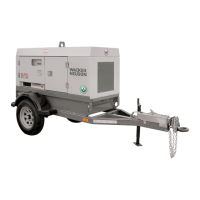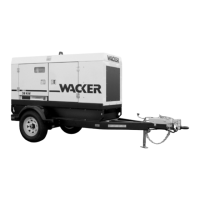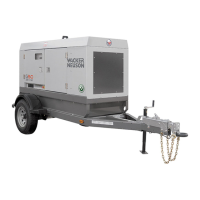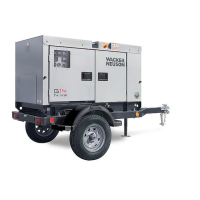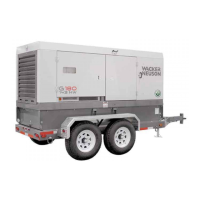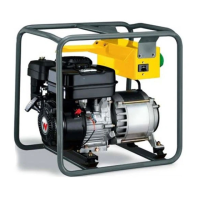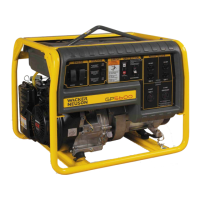3A-2
3A POWER REQUIREMENTS 50 HZ PORTABLE GENERATORS
3.4 Grounding the Generator
The generator should be grounded to a good ground
source in compliance with National Electric Code stand-
ards and local regulations.
Use #8 wire and secure one end to the ground terminal
(a) provided on the generator frame and the other end to
a suitable ground source. See Figure 3-1.
3.5 Use of Extension Cords
When a long extension cord is used to connect an appliance or tool to the generator, a voltage loss occurs – the longer
the cord, the greater the voltage loss. This results in less voltage being supplied to the appliance or tool and increases
the amount of current draw or reduces performance. A heavier cord with a larger wire size will reduce the voltage loss.
Use Table 3-1 below as a guide for selecting proper cable size.
Use only extension cords rated for outdoor use and equipped with a third-wire ground.
Current Load in Watts Maximum Cable Length in Ft.
Amps 120V 240V #10 #12 #14 #16
2.5 300 600 1000 ft. 600 ft. 375 ft. 250 ft.
5 600 1200 500 ft. 300 ft. 200 ft. 125 ft.
7.5 900 1800 350 ft. 200 ft. 125 ft. 100 ft.
10 1200 2400 250 ft. 150 ft. 100 ft.
15 1800 3600 150 ft. 100 ft. 65 ft.
20 2400 4800 125 ft. 75 ft. 50 ft.
1001SD02
Keep electrical cords in good condition. DO NOT use worn,
bare, or frayed cords which can cause electrical shock.
WARNING
a
CAUTION: Operating equipment at low voltage can cause overheating.
Figure 3-1. Grounding
Table 3-1.

